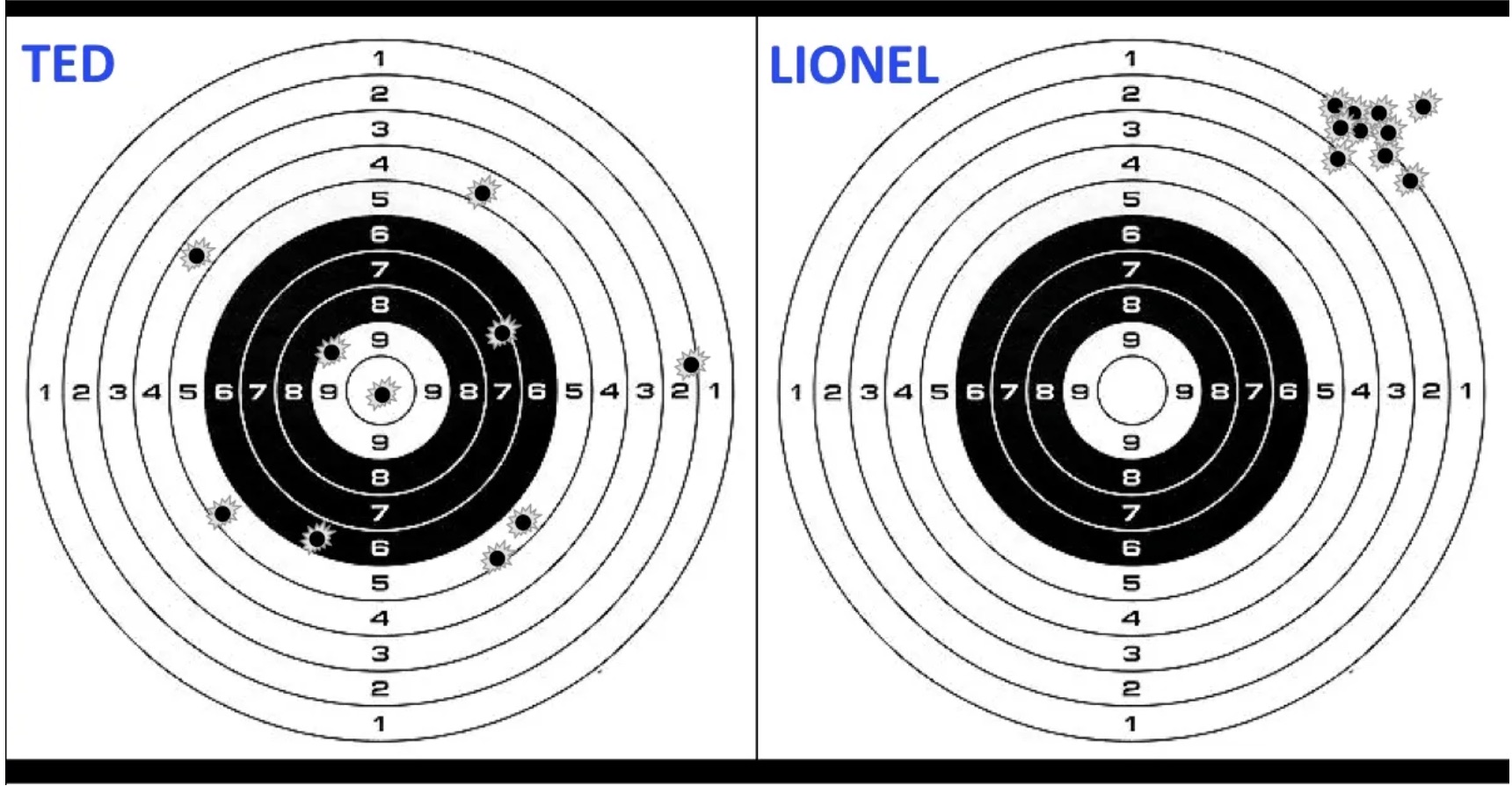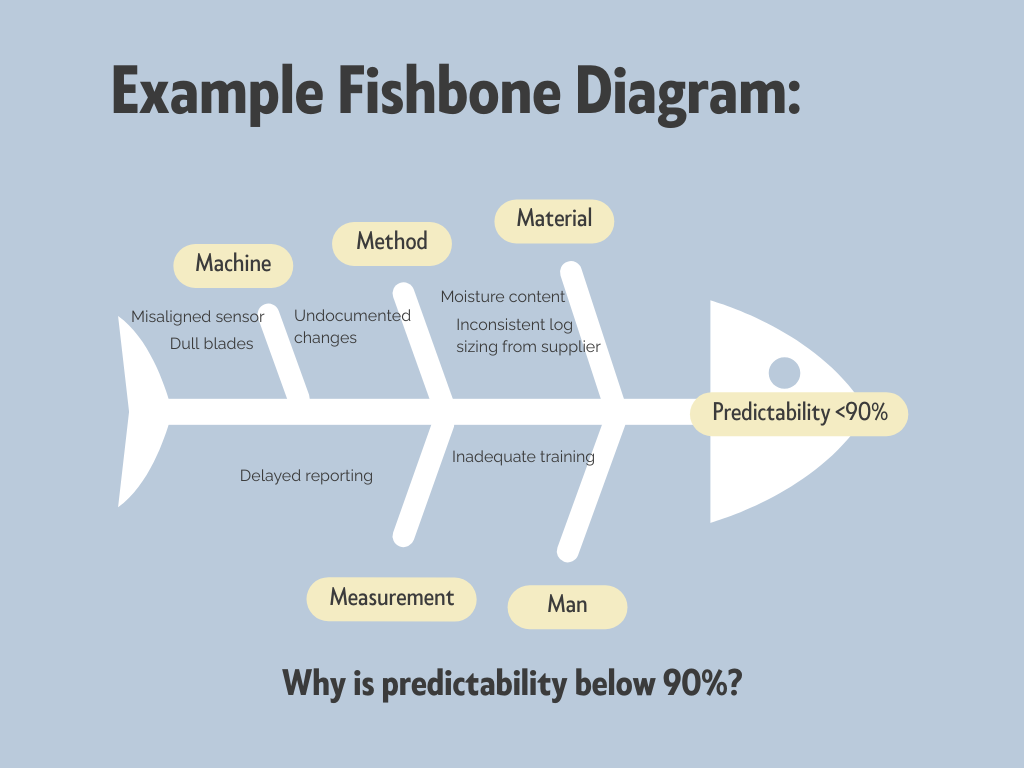
-
August 20, 2018
- 0 Comment
Lumber Mill Predictability: The #1 Hidden KPI Costing You Millions
Over the years, lumber companies have wisely invested in optimization technology to remove human error and influence from log/cant/board breakdown decisions. These systems are designed to leverage all available data (log diameter, shape, taper, etc.) in an instant and optimize each log in a way that was impossible before. Mills everywhere have installed these computers from various suppliers, and each machine represents a truly amazing potential benefit to the mill. They bring potential that nearly every lumber mill fails to fully realize because of two reasons:
1. An improper optimization strategy
2. Poor execution of the optimized solution (aka poor Predictability)
Our recent article, What Is Deconstructive Manufacturing? From T-Bones to 2x4s, Every Cut Determines Profit, discusses how, unlike most other manufacturing processes, lumber is considered deconstructive manufacturing. The greatest value that a lumber mill can hope to get out of every tree is defined by how perfectly it deconstructs them. Every decision, every cut, is critical to maximizing profit. Understanding how deconstructive manufacturing differs from other manufacturing is crucial going forward.
With deconstructive manufacturing in mind, these two reasons above should be alarming.
1. An improper optimization strategy affects every decision.
2. Poor execution of the optimized solution (poor Predictability) can happen in every cut.
In our experience, these two issues result in the loss of millions of dollars per mill each year.
To further break this down, consider the following illustration:

Ted and Lionel are sighting in their deer rifles before hunting season. You can see that Ted had two solid hits in the bullseye, one in the 7-ring, one in the 6-ring, and the others in the 5-ring and below. Lionel, however, had all his hits in the top right corner, in the 2- and 1-ring, and even a few outside the target.
So the question is: Who is the better shooter?
Anyone who knows anything about shooting would identify Lionel as the better shooter. Though he was way outside of the bullseye, he executed consistency in his shooting. His group of ten shots was so tight that all he needs to do is adjust his scope and he’ll get nearly every shot in the bullseye.
Ted’s shots are all over the place and likely caused by a number of issues: breathing, trigger control, anticipating recoil, etc.. To improve, he can’t simply adjust his scope. He needs to focus on fundamentals and execution.
Similarly, before altering an optimization strategy, lumber mills must first know and understand their Predictability. Once a mill consistently shows high levels of Predictability, implementing a revised optimization strategy delivers immediate financial improvement—like flipping a switch.
Below I’ve laid out a four-step approach to integrating Predictability into your operations.
1. Define Predictability Consistently Across the Organization
Lumber mill Predictability should be defined as “the level of accuracy of the actual lumber mix in the green sorter versus the anticipated lumber mix that was optimized at the primary breakdown on a piece-by-piece, dimension/length basis.”
Having been in countless mills, I’ve discussed Predictability with many people whose understanding of the concept typically falls into one of two camps: “What are you talking about?” or “We kind of track that.” This second group often compares total board feet in the green sorter vs. anticipated board feet at the primary breakdown. While appearing to be helpful, this method is counterproductive, since it gives a false sense that your process is under control.
True Predictability means that when your primary breakdown optimizer sets saws to wood to get a 12-foot 2’x10′, that’s what you actually get. Under the “total BF” pseudo-Predictability, I’ve seen mills feeling accomplished when their intended 12-ft 2’x10′ ended up as a 16-ft 2’x8′ because they “gained BF.”
2. Elevate Predictability to a Weekly KPI
If you’re responsible for optimization in a lumber mill — whether you’re a mill manager, a VP, or a CEO — you should be able to look at your company’s weekly management report and see a Predictability KPI that you and your team focus on with rigor.
If you don’t have that KPI in place, you have a major blind spot. It’s akin to Ted and Lionel sighting in their rifles by shooting at a target that’s behind a curtain. Both might tell themselves “that felt pretty good,” or “I feel like I’m shooting consistently.” But they really have no idea if they need to improve, or what they should do. Without a Predictability KPI, you and your team may “feel good” that you’re likely on target but you don’t know for certain.
3. Address Root-Cause Issues
The first time a mill runs a test to measure their Predictability, the results are often quite poor. It is never a simple fix to correct it. Improving and maintaining high levels of Predictability is a constant process of Root Cause Analysis (RCA), and your team needs to be up to the challenge. The most effective tool I’ve found for RCA of Predictability is the Fishbone Diagram using the “5 M’s”:
Machine
Method
Material
Man
Measurement

This tool is excellent at helping teams identify and address root causes through highly specific and targeted action plans and/or maintenance work requests.
4. Repeat Step 2
Achieving a high degree of Predictability represents a significant operational milestone. But things can become “un-predictable” very quickly. Scanners get covered in sawdust, a night shift supervisor makes a “temporary change” to the optimizer and doesn’t report it, heavy logs smash into things and slop is introduced into a machine center, the list goes on.
You can’t think about Predictability as a short-term goal to check off the list and then forget about. That’s like dieting to lose weight, then going back to the way you used to eat and expecting to stay thin. Predictability must be an integral way to manage a lumber mill, not just a fad diet.
The Big “Why”
Predictability means accomplishing what you set out to do. With high Predictability, you have two choices: maintain your current strategy and consistently hit your targets, or use that Predictability as a foundation to confidently implement new optimization strategies that deliver dramatically better financial results.
If your mill is running low Predictability, or if you lack a solid optimization strategy for today’s market, we can help! Let us know, and we’ll schedule a consult to see how we can help maximize the profit from every stem your mill receives.


